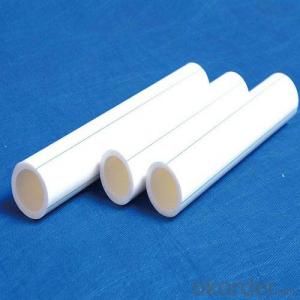Plastic pipe compression fittings have become an essential part of modern plumbing systems. They are widely used in various applications, including water supply, gas distribution, and HVAC systems. But what makes these fittings so important and why should you consider using them in your projects? Let’s dive into the world of plastic pipe compression fittings and explore their benefits, applications, and installation process.
The Benefits of Plastic Pipe Compression Fittings
One of the main advantages of using plastic pipe compression fittings is their durability. Unlike metal fittings, which can corrode over time, plastic fittings are resistant to corrosion and can last for many years without any maintenance. This not only saves you money on repairs but also ensures that your plumbing system remains functional and efficient.
Another benefit is their ease of installation. Plastic fittings can be installed quickly and easily, often without the need for specialized tools. This can save you time and labor costs, making them an attractive option for both DIY enthusiasts and professional plumbers.
Plastic pipe compression fittings are also known for their versatility. They can be used with a wide range of pipe materials, including PVC, PEX, and CPVC, making them suitable for various applications. Additionally, they are available in different sizes and configurations, allowing you to choose the perfect fitting for your specific needs.
Applications of Plastic Pipe Compression Fittings
Plastic pipe compression fittings are used in a variety of applications, from residential to commercial settings. In residential homes, they are commonly used for water supply lines, such as those found in bathrooms and kitchens. They are also used for gas distribution systems, ensuring a safe and efficient supply of gas for cooking and heating.
In commercial settings, plastic pipe compression fittings are used for larger-scale water and gas distribution systems. They are ideal for use in office buildings, hotels, and other large structures where a reliable and efficient plumbing system is crucial.
The Installation Process
Installing plastic pipe compression fittings is a straightforward process that can be broken down into a few simple steps. First, you need to measure and cut the pipe to the desired length. Next, you’ll need to insert the pipe into the fitting, ensuring that it fits snugly and securely. After that, you’ll need to tighten the compression ring, which will create a tight seal and prevent any leaks.
It’s important to follow the manufacturer’s instructions carefully when installing plastic pipe compression fittings to ensure a proper fit and prevent any potential issues. Proper installation is key to the longevity and performance of your plumbing system.
Maintenance and Troubleshooting
One of the best things about plastic pipe compression fittings is that they require very little maintenance. However, there are a few things you should keep in mind to ensure they continue to function properly. Regularly inspect the fittings for any signs of wear or damage, and replace them if necessary.
If you encounter any issues with your plastic pipe compression fittings, such as leaks or difficulty in tightening, it’s important to address these problems promptly. In most cases, these issues can be resolved by adjusting the compression ring or replacing the fitting altogether.
The Future of Plastic Pipe Compression Fittings
As technology advances, so too do the materials and methods used in plumbing systems. Plastic pipe compression fittings are constantly being improved and refined to offer even greater durability, ease of installation, and performance. With ongoing research and development, we can expect to see even more innovative and efficient solutions in the future.
In conclusion, plastic pipe compression fittings are an invaluable component of modern plumbing systems. Their durability, ease of installation, versatility, and low maintenance requirements make them an attractive option for a wide range of applications. By understanding the benefits and proper installation techniques, you can ensure that your plumbing system remains reliable and efficient for years to come.

